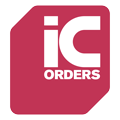Integrated Circuits (IC), often referred to as microchips or simply chips, are a cornerstone of modern electronics. These tiny silicon-based components have revolutionised the way we live, work and play. This article will delve into the fascinating world of IC circuits, exploring their history, how they work, their types and applications, and the future of this incredible technology.
History of Integrated Circuits
The concept of integrated circuits was first introduced in the mid-20th century. The invention of the transistor in 1947 by Bell Laboratories was a significant milestone that paved the way for the development of IC circuits. However, it was Jack Kilby of Texas Instruments who is credited with the invention of the first practical integrated circuit in 1958.
Initially, IC circuits were expensive and found limited use in military and aerospace applications. However, as manufacturing techniques improved and costs reduced, they became a common feature in consumer electronics. Today, IC circuits are an integral part of virtually every electronic device, from smartphones and computers to cars and household appliances.
How Integrated Circuits Work
At the most basic level, an integrated circuit is a collection of electronic components such as transistors, diodes, and resistors, fabricated on a single piece of semiconductor material, typically silicon. These components are interconnected to perform a specific function.
The operation of an IC circuit is based on the principles of semiconductor physics. The semiconductor material, usually doped with impurities, can control the flow of electric current. By arranging the electronic components in a specific way, the IC circuit can perform complex tasks such as amplifying signals, processing data, or generating radio waves.
Manufacturing Process
The manufacturing process of IC circuits is complex and requires a high degree of precision. It involves several steps, including photolithography, etching, doping, and metallisation. The process begins with a wafer of pure silicon, onto which the circuit design is transferred using a process called photolithography. The unwanted silicon is then etched away, and the remaining areas are doped with impurities to create the electronic components. Finally, a thin layer of metal is deposited to form the interconnections.
The result is a tiny, but incredibly complex, electronic circuit that can perform a wide range of tasks. The size and complexity of IC circuits have increased dramatically over the years, with modern chips containing billions of transistors.
Types of Integrated Circuits
There are several types of integrated circuits, each designed for a specific application. The most common types include digital ICs, analogue ICs, and mixed-signal ICs.
Digital ICs
Digital ICs, also known as logic ICs, are used in devices that work with binary data. They include microprocessors, microcontrollers, and memory chips. Digital ICs are the backbone of modern computing and are found in devices such as computers, smartphones, and digital cameras.
Analogue ICs
Analogue ICs are used in devices that process continuous signals. They include amplifiers, oscillators, and power management circuits. Analogue ICs are commonly found in audio and video equipment, as well as in sensors and power supplies.
Mixed-Signal ICs
Mixed-signal ICs combine both digital and analogue circuits on a single chip. They are used in devices that need to convert between digital and analogue signals, such as digital-to-analogue converters (DACs) and analogue-to-digital converters (ADCs). Mixed-signal ICs are commonly found in communication devices and digital media players.
Applications of Integrated Circuits
The applications of integrated circuits are vast and varied. They are used in virtually every sector of the economy, from consumer electronics and telecommunications to automotive and healthcare.
In consumer electronics, IC circuits are used in devices such as televisions, radios, and home appliances. They are also used in communication devices such as mobile phones and satellite receivers. In the automotive industry, IC circuits are used in engine control units, navigation systems, and safety features such as airbag controllers. In the healthcare sector, IC circuits are used in medical devices such as pacemakers, hearing aids, and diagnostic equipment.
The Future of Integrated Circuits
The future of integrated circuits is promising, with several exciting developments on the horizon. One of the most significant trends is the move towards smaller and more efficient chips. This is being driven by advances in manufacturing technology, which are enabling the production of chips with features as small as a few nanometres.
Another trend is the increasing integration of different types of circuits on a single chip. This is leading to the development of system-on-chip (SoC) solutions, which combine a microprocessor, memory, and peripheral interfaces on a single chip. SoCs offer significant advantages in terms of performance, power consumption, and cost.
Finally, there is growing interest in the development of new types of integrated circuits, such as quantum chips and neuromorphic chips. These offer the potential for dramatic increases in computing power and efficiency, opening up new possibilities in areas such as artificial intelligence and quantum computing.
In conclusion, integrated circuits are a fundamental technology that has transformed our world. Their continued development promises to drive further advances in electronics and computing, shaping the future of technology and society.
As you consider the evolving landscape of integrated circuits and their impact on your projects, remember that expertise and reliability are key to navigating this complex market. With over 12 years of experience, IC Orders stands ready to be your independent distributor, ensuring you find the exact part numbers you need to complete your Bill of Materials (BOM). Embrace the future of technology with confidence. Contact Us for A Quote Today and let us help you stay ahead in the ever-changing world of electronics.
